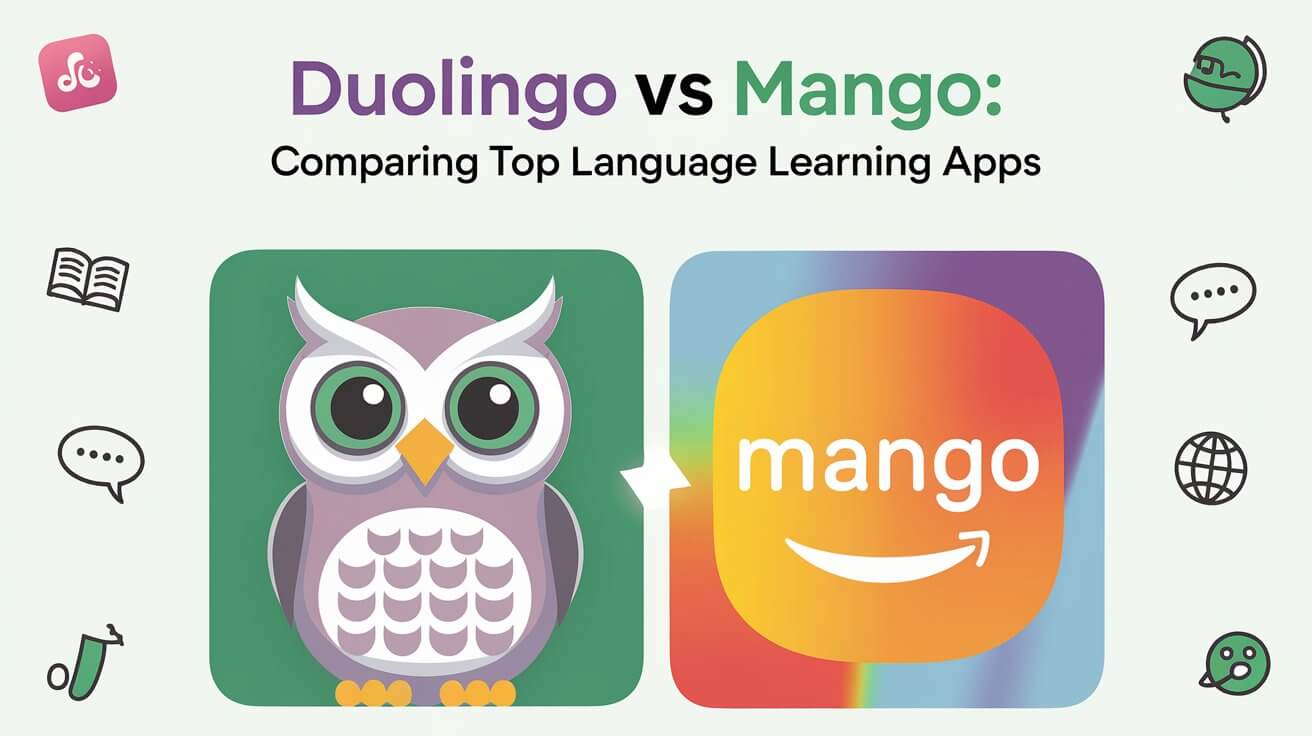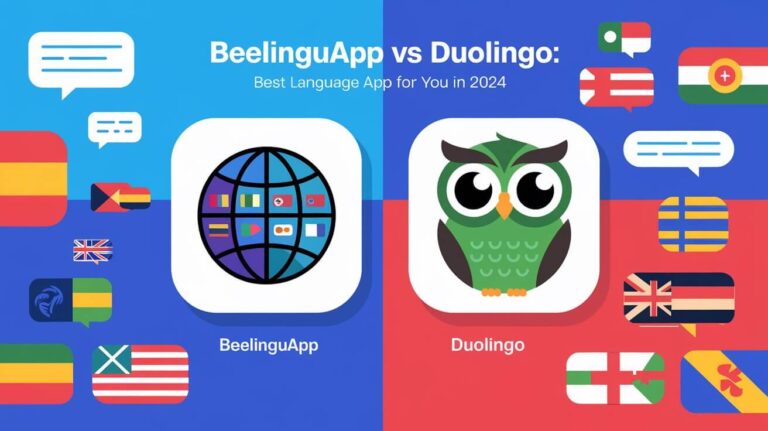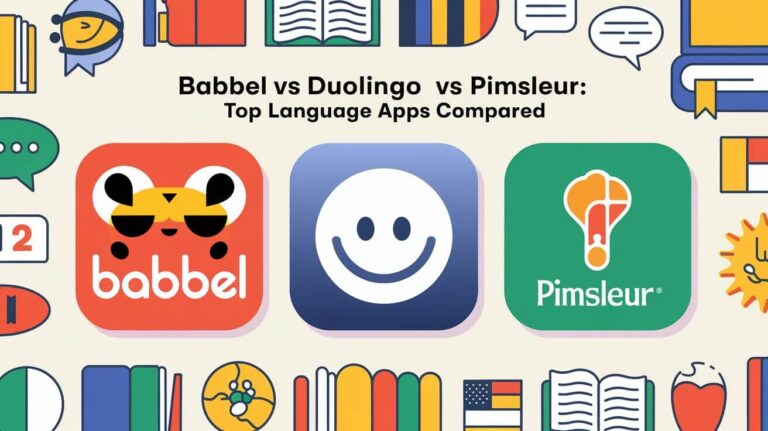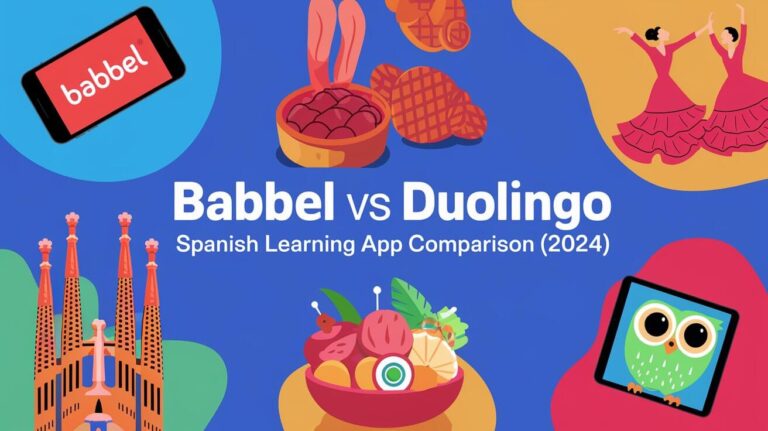Learning a new language has never been easier, thanks to the rise of language learning apps. Two popular contenders in this space are Duolingo and Mango Languages. Both apps offer unique approaches to language learning, but which one is the best fit for you? In this comprehensive comparison, we’ll explore the features, strengths, and weaknesses of Duolingo and Mango to help you make an informed decision.
Key Features of Duolingo
Gamification and Learning Approach
Duolingo has made a name for itself with its gamified approach to language learning. The app turns lessons into fun, bite-sized challenges that keep users engaged and motivated. With colorful graphics, cheerful sound effects, and a streak-based reward system, Duolingo makes language learning feel like playing a game.
Users progress through levels, earning experience points and virtual currency called “lingots” or “gems.” These can be used to unlock bonus lessons or power-ups. The gamification aspect of Duolingo is particularly appealing to casual learners and those who struggle with maintaining motivation.
Language Options
Duolingo offers an impressive array of language courses. As of 2024, users can choose from over 40 languages, including popular options like Spanish, French, and German, as well as less common languages like Welsh, Navajo, and even constructed languages like Klingon and High Valyrian.
This wide variety makes Duolingo an excellent choice for language enthusiasts who want to dabble in multiple languages or those interested in niche options.
Pricing and Accessibility
One of Duolingo’s biggest selling points is its free tier. Users can access all language courses and core features without paying a dime. However, the free version comes with ads and limited lives (attempts before being locked out of lessons for a period).
For those who want an ad-free experience and unlimited lives, Duolingo offers a premium subscription called Super Duolingo. Pricing starts at $6.99 per month for an annual plan, making it one of the more affordable options on the market.
Key Features of Mango Languages
Conversation-Based Learning
Mango Languages takes a different approach, focusing on practical, conversation-based learning. The app emphasizes real-world communication skills from the start, teaching users how to construct sentences and engage in meaningful dialogues.
Each lesson revolves around a conversation, which is broken down into smaller, manageable chunks. Users learn not just individual words, but how to use them in context. This method is particularly effective for those who prioritize speaking skills and want to prepare for real-life language use.
Cultural Notes and Grammar Tips
One of Mango’s standout features is its inclusion of cultural notes and grammar explanations. These provide valuable context, helping learners understand not just the language, but also the cultural nuances behind it. For instance, when learning Japanese, users might encounter notes on politeness levels and when to use them.
Grammar tips are integrated seamlessly into lessons, offering clear explanations without overwhelming the learner. This balanced approach helps users grasp the structure of the language without getting bogged down in complex rules.
Language Options and Availability
Mango Languages boasts an extensive catalog of over 70 languages. This includes widely spoken languages like Mandarin Chinese and Arabic, as well as less common options such as Icelandic and Punjabi. The app also offers specialized courses like “Medical Spanish” and “Pirate.”
One unique aspect of Mango is its availability through many public libraries. Many users can access Mango for free with their library card, making it an excellent option for budget-conscious learners.
Learning Experience Comparison
User Interface and Ease of Use
Duolingo’s interface is bright, colorful, and intuitive. The app’s design is clean and straightforward, making it easy for users of all ages to navigate. Lessons are organized in a skill tree, allowing users to see their progress at a glance.
Mango’s interface, while less gamified, is equally user-friendly. The app uses a sleek, professional design that appeals to adult learners. Lessons are organized by chapters and units, providing a clear learning path.
Both apps offer a smooth user experience, but Duolingo’s playful design might be more engaging for younger learners or those who enjoy a game-like atmosphere.
Lesson Structure and Progression
Duolingo’s lessons are short and varied, typically taking 5-10 minutes to complete. They include a mix of translation exercises, listening comprehension, and speaking practice. The app uses spaced repetition to reinforce learning, bringing back previously learned content at strategic intervals.
Mango’s lessons are more in-depth, often lasting 15-20 minutes. They follow a consistent structure: introduction of new content, practice, and review. The app emphasizes pattern recognition, helping users understand how the language works rather than just memorizing phrases.
While Duolingo’s quick-fire approach works well for casual learning and maintaining daily habits, Mango’s more structured lessons might be better suited for dedicated study sessions.
Speaking and Listening Practice
Both apps offer speaking and listening components, but their approaches differ. Duolingo includes speaking exercises where users repeat phrases or answer questions. The app uses speech recognition technology to check pronunciation, though its accuracy can be hit-or-miss.
Mango places a stronger emphasis on pronunciation. Its voice comparison tool allows users to record themselves and compare their pronunciation to that of a native speaker. This feature provides valuable feedback for improving accent and intonation.
For listening practice, Duolingo primarily uses computer-generated voices, while Mango uses recordings of native speakers. This gives Mango an edge in preparing users for real-world conversations.
Effectiveness for Different Learning Goals
Beginners vs Advanced Learners
Duolingo shines as a tool for beginners. Its gamified approach and gradual introduction of vocabulary and grammar make it less intimidating for those starting their language learning journey. However, advanced learners might find the content too basic and repetitive.
Mango caters to a wider range of proficiency levels. While it’s accessible to beginners, its in-depth explanations and focus on practical conversation skills make it valuable for intermediate and advanced learners as well. The app’s cultural notes and nuanced language use can benefit even those with a strong foundation in the language.
Casual Learning vs Serious Study
For casual learners looking to pick up some basics or maintain their skills, Duolingo’s bite-sized lessons and game-like elements are ideal. The app’s daily streak feature encourages consistent practice, even if it’s just for a few minutes a day.
Mango is better suited for serious language study. Its comprehensive lessons and focus on practical communication make it a solid choice for those aiming for fluency or preparing for immersion experiences. The app’s structure lends itself well to dedicated study sessions.
Travel Preparation
Both apps can be useful for travelers, but in different ways. Duolingo’s broad vocabulary coverage can help users recognize written words and basic phrases, which is helpful for reading signs and menus.
Mango’s conversation-based approach and cultural notes give it an edge for travelers who want to engage with locals. The app’s focus on practical, everyday language makes it particularly useful for common travel situations like ordering food or asking for directions.
Community and Additional Resources
Duolingo’s Social Features
Duolingo offers several social features that enhance the learning experience. Users can join clubs, compete on leaderboards, and follow friends’ progress. These social elements add a layer of competition and accountability that can boost motivation.
The app also has a forum where users can discuss language-related topics and seek help from the community. This peer-to-peer interaction can be valuable for clarifying doubts and gaining insights from fellow learners.
Mango’s Supplementary Materials
While Mango lacks Duolingo’s social features, it compensates with a wealth of supplementary materials. The app offers cultural insights, grammar references, and even movies with interactive subtitles in some languages.
Mango also provides printable resources and study materials, which can be helpful for offline review or classroom use. These additional resources make Mango a more comprehensive tool for language learning beyond just the app.
Pricing Models Compared
Free vs Paid Options
Duolingo’s core content is available for free, with ads and some limitations. This makes it an attractive option for budget-conscious learners or those just starting their language journey. The paid Super Duolingo subscription removes ads, offers unlimited lives, and provides additional features like offline lessons.
Mango, on the other hand, is primarily a paid service. While some users can access it for free through their local libraries, individual subscriptions start at $12.99 per month for one user. The lack of a free tier might be a drawback for casual learners, but the comprehensive content justifies the cost for serious language students.
Subscription Plans and Features
Duolingo’s Super Duolingo subscription, priced at $6.99 per month (annual plan), offers an ad-free experience, unlimited hearts, and the ability to download lessons for offline use. It also includes progress quizzes and mastery quizzes to track learning.
Mango’s subscription plans are more flexible. Users can choose between single-language access or all-language access, with monthly and annual billing options. The all-language plan, while more expensive, provides excellent value for polyglots or those exploring multiple languages.
Mobile App Performance
iOS and Android Experiences
Both Duolingo and Mango offer well-designed mobile apps for iOS and Android devices. Duolingo’s app closely mirrors its web version, providing a consistent experience across platforms. The app’s light footprint makes it suitable for older devices.
Mango’s mobile app offers full functionality, including voice recording features. Some users report that the Android version occasionally lags behind the iOS version in updates, but overall, both provide a smooth learning experience.
Offline Learning Capabilities
Offline learning is crucial for users who want to study without an internet connection. Duolingo allows Plus subscribers to download lessons for offline use, making it convenient for travel or areas with poor connectivity.
Mango also offers offline access to lessons, which is particularly useful given the app’s longer, more in-depth lesson format. This feature allows users to make productive use of commute times or flights for language study.
User Reviews and Ratings
App Store and Google Play Feedback
Both apps enjoy positive ratings on app stores. As of 2024, Duolingo boasts a 4.7-star rating on both the App Store and Google Play, based on millions of reviews. Users praise its engaging format and the variety of languages offered.
Mango Languages holds a 4.8-star rating on the App Store and a 4.5-star rating on Google Play. Reviewers often highlight the app’s comprehensive approach and the quality of its cultural content.
User Success Stories
Many users report significant progress with both apps. Duolingo users often share stories of maintaining year-long streaks and feeling more confident in basic conversations. The app’s gamified approach seems particularly effective in building consistent study habits.
Mango users frequently mention improved speaking skills and cultural understanding. Several reviews highlight successful experiences using Mango-learned phrases in real-world situations, particularly during travel.
Pros and Cons of Duolingo and Mango
Duolingo Pros:
- Free core content
- Gamified, engaging format
- Wide variety of languages
- Strong community features
Duolingo Cons:
- Limited depth in advanced levels
- Computer-generated voices
- Occasional nonsensical phrases
Mango Pros:
- Conversation-focused approach
- Rich cultural content
- High-quality audio from native speakers
- Comprehensive grammar explanations
Mango Cons:
- Higher cost
- Fewer gamification elements
- Less suitable for quick, casual learning
Which App is Right for You?
Factors to Consider
When choosing between Duolingo and Mango, consider your learning goals, budget, and study preferences. If you’re a casual learner looking for a fun, free way to start a language, Duolingo might be the better choice. Its gamified approach and bite-sized lessons make it easy to maintain a daily habit.
For those serious about achieving fluency or preparing for real-world language use, Mango’s comprehensive approach might be more suitable. Its focus on practical conversations and cultural insights provides a solid foundation for language mastery.
Recommendations Based on Learning Styles
Visual learners might prefer Duolingo’s colorful interface and picture-based exercises. The app’s varied activity types cater well to those who enjoy diverse learning methods.
Auditory learners and those focused on speaking skills may find Mango more effective. Its high-quality audio and voice comparison tool provide excellent resources for improving pronunciation and listening comprehension.
Conclusion: Duolingo vs Mango – Final Opinion
In the Duolingo vs Mango debate, there’s no clear winner – each app excels in different areas. Duolingo’s strength lies in its accessibility, engaging format, and ability to build consistent study habits. It’s an excellent starting point for language learning and a great tool for maintaining skills.
Mango Languages, with its focus on practical communication and cultural understanding, offers a more comprehensive language learning experience. While it comes at a higher cost, the depth of content and quality of instruction make it a valuable resource for serious language learners.
The best choice depends on your needs and goals. Language learners often use both apps – Duolingo for daily practice and games, and Mango for deeper study and conversation. Whichever you pick, consistent practice is key to learning a language.







